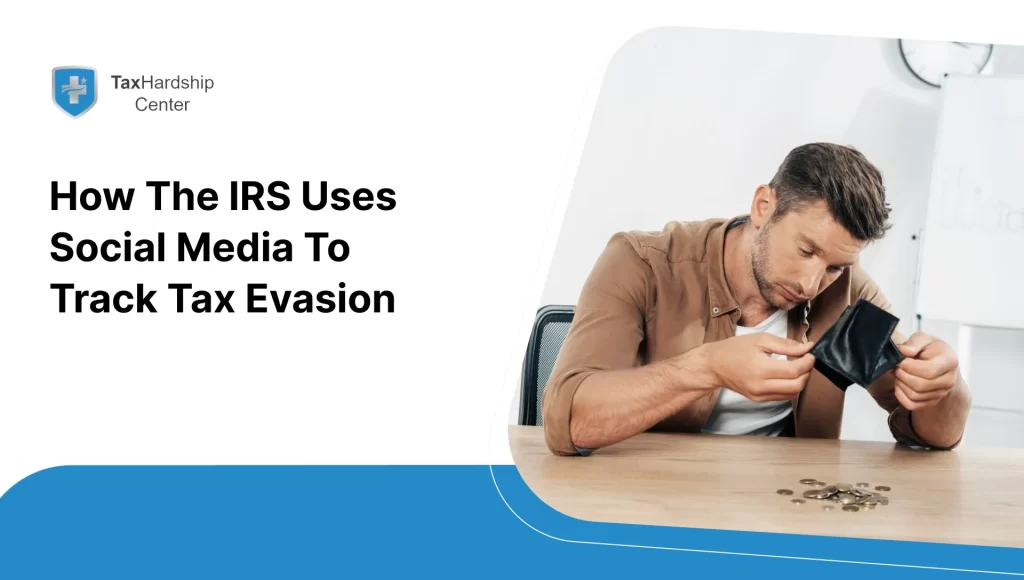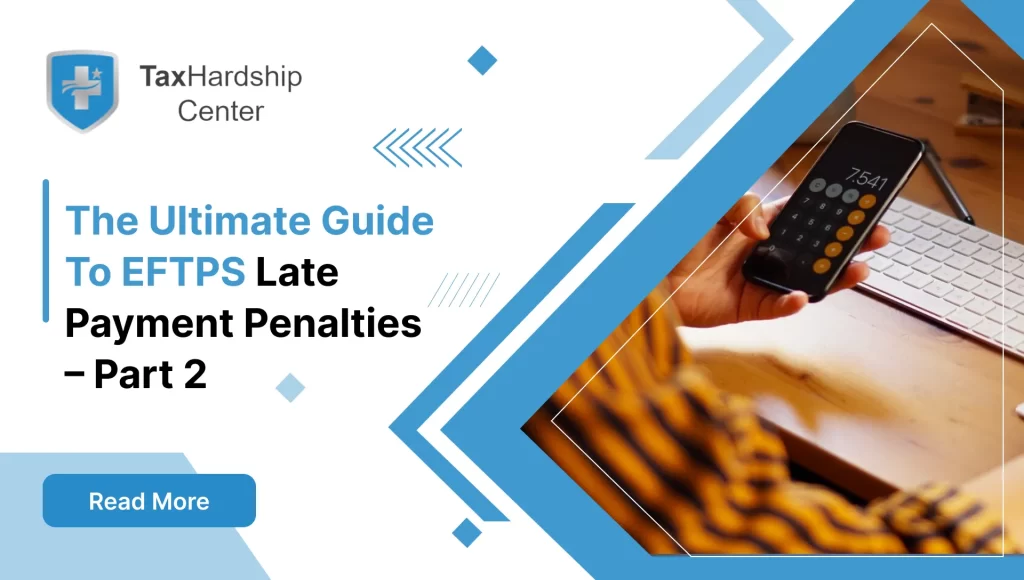The Fresh Start Tax Relief Program is an initiative introduced by the Internal Revenue Service (IRS) in the United States to help taxpayers struggling with their tax liabilities. This program aims to provide eligible individuals and businesses with relief options that help resolve their tax debts and regain financial stability.
The Fresh Start program includes several key provisions designed to make it easier for taxpayers to settle their tax obligations.
Getting You the Right Financial Relief: Qualifications for the IRS Fresh Start Initiative
Are you feeling overwhelmed by tax debt?
Struggling to find a way out of the financial burden imposed by IRS obligations?
You’re not alone. The IRS Fresh Start Program or the Fresh Start Initiative could be the lifeline you’ve been searching for. Designed by the Internal Revenue Service (IRS) to assist individuals and small businesses grappling with substantial tax debt, this strategic program offers a variety of options to help you regain your financial footing. This comprehensive guide will delve into what the IRS Fresh Start Program Initiative entails, how it can benefit you, and what qualifications you need to meet to take advantage of its offerings. From streamlined installment agreements to offers in compromise, we’ll explore the various avenues available to ease your tax burden. Let’s embark on a journey to financial relief together.
What Does the IRS Fresh Start Program Exactly Do?
The Fresh Start Initiative is a comprehensive program that offers a variety of options to taxpayers who find themselves burdened with tax liabilities:
Tax Liens: One of the significant changes brought about by the Fresh Start program is the increase in the IRS Notice of Federal Tax Lien filing threshold from $5,000 to $10,000. This change means taxpayers with a tax debt of less than $10,000 are less likely to have a lien filed against them, providing some relief from the financial implications of a tax lien. However, it’s important to note that liens may still be filed on amounts less than $10,000 when circumstances warrant.
Installment Agreements: The Fresh Start Initiative has broadened access to streamlined installment agreements. Now, individual taxpayers who owe up to $50,000 can pay their tax debt through monthly direct debit payments spread over a period of up to six years. This extended payment period provides taxpayers with a more manageable way to settle their tax debt.
Offers in Compromise (OIC): The Fresh Start Initiative introduced significant changes to the OIC program, making it more flexible for taxpayers. An OIC is an agreement that allows taxpayers to settle their tax debt for less than the total amount owed if paying the total amount would result in financial hardship. This option provides a viable solution for taxpayers who cannot pay their total tax debt and seek a compromise to resolve their tax liabilities.
What If You Can’t Afford a Payment Plan?
What happens if a payment plan is beyond your financial reach? The IRS Fresh Start Initiative provides an alternative solution – the Offer in Compromise (OIC). This option allows taxpayers to settle their tax debt for less than the total amount they owe, providing a potential lifeline for those struggling with substantial tax liabilities.
The Fresh Start Initiative has eased the eligibility criteria for the OIC, making it more accessible for taxpayers. However, it’s important to note that this option still necessitates detailed financial disclosures. This ensures that the IRS comprehensively understands your financial situation, enabling them to make an informed decision.
While the OIC presents an opportunity for debt relief, it’s crucial to remember that acceptance is not guaranteed. Each application is evaluated on its merits, considering income, expenses, and asset equity. Therefore, while the OIC can be a viable path toward financial relief, it requires careful consideration and planning.
Eligibility and Application Criteria for the IRS Fresh Start Initiative
The IRS Fresh Start Initiative is a beacon of hope for taxpayers seeking financial relief. However, to qualify for this program, specific eligibility criteria must be met:
Tax Compliance: One of the fundamental prerequisites is compliance with all tax filings. All your tax returns should be duly filed, reflecting your commitment to fulfill your tax obligations.
Bankruptcy Status: The initiative does not apply to individuals currently in bankruptcy proceedings. This is because bankruptcy involves different legal and financial considerations that could complicate the process.
Specific Conditions: If you’re applying for a payment plan or an Offer in Compromise (OIC), particular conditions must be met. These conditions ensure that the relief provided aligns with your financial situation.
The process may seem daunting, especially when revealing your financial situation to the IRS. However, this transparency is a necessary tradeoff for the potential relief the Fresh Start Initiative can provide. It’s about demonstrating your willingness to comply with the tax laws while seeking a feasible solution to your tax debt.
Navigating the Application Process for the IRS Fresh Start Program
Embarking on the application process for the IRS Fresh Start Program involves a series of steps designed to ensure your eligibility and compliance:
Documentation: The first step involves gathering and submitting all required documentation. This includes your tax returns, which provide a comprehensive overview of your financial history and current standing. Proper documentation is crucial as it forms the basis of your application.
Current Tax Filings and Payments: It’s essential to ensure you’re up-to-date with all tax filings and payments. This demonstrates your commitment to meeting your tax obligations and aligns with the program’s eligibility requirements.
Professional Guidance: The application process can be complex and challenging to navigate. Therefore, consider engaging with a tax professional. Their expertise and guidance can prove invaluable, helping you understand the intricacies of the process and increasing your chances of a favorable outcome.
What Are the IRS Fresh Start Program Qualifications?
The Internal Revenue Service (IRS) Fresh Start Program is a beacon of hope for those burdened with tax debt. It’s a program designed to facilitate more manageable repayment and, in some cases, even forgiveness of tax debts. However, to fully benefit from this program, understanding its qualifications is crucial.
Owed Amount
The Fresh Start Program primarily targets individuals whose tax debt is at most $50,000 at the time of application. This threshold ensures that the program benefits those who need it most. However, exceptions can be made for taxpayers with higher debt, providing a glimmer of hope for those facing substantial tax liabilities. This flexibility demonstrates the program’s commitment to assisting as many taxpayers as possible.
Tax Returns
Compliance with all filing requirements is a non-negotiable criterion. This stipulation ensures that all past tax returns are filed, reflecting a taxpayer’s commitment to fulfilling their tax obligations. It serves as a prerequisite for consideration into the program, emphasizing the importance of tax compliance.
Minimum Payments
The program also mandates that all required estimated tax payments for the current year are made. For business owners with employees, being up to date on all federal tax deposits is a must. This requirement underscores the importance of staying current with your tax responsibilities, reinforcing the program’s objective of promoting tax compliance.
The Fresh Start program qualifications are meticulously designed to balance the government’s need for tax compliance and the taxpayers’ ability to pay. They reflect a mutual interest – aiding taxpayers in navigating their tax obligations while maintaining the government’s tax revenues. This balance is the cornerstone of the Fresh Start initiative, making it a win-win solution for both parties involved.
The IRS Fresh Start Program is more than just a financial relief initiative. It’s a testament to the government’s commitment to helping taxpayers meet their obligations in a manageable way. By understanding and meeting the qualifications, taxpayers can unlock the benefits of this program, turning a daunting tax debt into a manageable financial obligation.
Assessing the Impact of the Fresh Start Initiative
The significance of a tax relief program like the Fresh Start Initiative on one’s financial health cannot be overstated. Participation in this program can offer substantial benefits:
Avoidance of Aggressive Collection Actions: The IRS is known for its aggressive collection actions, including levies on your wages or bank accounts. These actions can exacerbate financial stress and strain. However, by participating in the Fresh Start Initiative, you can avoid such actions, providing a much-needed reprieve.
Financial Relief: The Fresh Start Initiative is designed to provide economic relief to those struggling with tax debts. This relief can come in various forms, such as extended payment plans or the possibility of reducing the overall tax debt.
Peace of Mind: Beyond the tangible financial benefits, the Fresh Start Initiative can also offer peace of mind. Knowing that you’re taking proactive steps to address your tax debts can alleviate the psychological burden often associated with financial strain.
In conclusion, the Fresh Start Initiative can profoundly impact your financial well-being, offering both tangible economic benefits and intangible psychological relief. It’s essential to consider these impacts when exploring this tax relief option.
Eligibility criteria and steps to qualify for Fresh Start tax relief programs:
The eligibility criteria for Fresh Start Tax Relief Programs, particularly those offered by the Internal Revenue Service (IRS) in the United States, vary depending on the specific relief option you are considering.
1. Owing Tax Debt:
It is essential to have an outstanding tax debt if you wish to qualify for Fresh Start programs. This debt can include unpaid taxes, penalties, and interest.
2. Tax Liability Amount:
Fresh Start programs often have specific criteria for the amount of tax debt you can owe to be eligible. The maximum limit is set to be $50,000. So, the IRS Fresh Start Initiative focuses on taxpayers owing $50,000 or less in combined tax, penalties, and interest.
3. Current Tax Filing Compliance:
To qualify for the tax relief program, you must be compliant and current with your tax filings. This means you should have filed all required tax returns for the years you owe taxes.
4. Ability to Pay:
IRS Fresh Start programs consider your current financial situation, including income, expenses, assets, and liabilities. If you can prove that you cannot pay the total tax debt due to financial hardship, you might be eligible for reduced payment options.
5. Instalment Agreements:
You might qualify for a streamlined installment agreement if you owe less than the program’s maximum threshold. This allows you to repay your debt over time through manageable monthly payments.
6. Offer in Compromise:
In some cases, you might be eligible for an Offer in Compromise (OIC), where you can settle your tax debt for less than the total amount owed. This is typically considered if paying the entire debt would cause undue financial hardship. It is essential that you have filed all your tax returns and are not part of any open bankruptcy proceedings.
7. Temporary Delay:
If you’re facing significant financial hardship and cannot pay your tax debt, you might qualify for a temporary delay in collection efforts until your financial situation improves. These hardships may be due to unemployment, disability, or severe health issues.
8. Professional Assistance:
Given the complexity of tax laws and the application process, seeking professional assistance from tax professionals, agents, or tax attorneys can be beneficial in understanding the eligibility criteria and navigating the application process.
9. Individual Assessment:
Each tax relief program has its own set of eligibility criteria. It’s essential to consult your tax authority’s specific guidelines or seek professional advice to determine your eligibility for a particular program.
10. Application Process:
Once you qualify for a relief option and determine eligibility, you must apply for the Fresh Start tax relief program. This involves submitting the required paperwork, financial information, and necessary documentation to demonstrate your financial hardship.
It’s important to note that eligibility criteria can change over time and may differ for various programs and tax authorities. Additionally, different types of tax relief options may have additional requirements. To determine your eligibility accurately, it’s advisable to:
- Review Official Guidelines: Refer to the official IRS guidelines or the tax authority’s official website for the most up-to-date information on eligibility criteria for specific Fresh Start programs.
- Gather Documentation: Ensure you have the necessary documents, financial records, and tax information ready when applying for a Fresh Start tax relief program. Accurate documentation is essential to prove your eligibility.
- Stay Informed: As tax laws and regulations evolve, staying informed about changes and updates can help you make informed decisions about your tax relief options.
Conclusion
It is essential to remember that Fresh Start Tax Relief Programs are designed to assist individuals and businesses facing financial hardships due to tax debts. Exploring your options and understanding the eligibility criteria can help you take steps toward resolving your tax issues and regaining control of your financial situation.
Overall, the Fresh Start Tax Relief Program aims to offer more accessible and flexible ways for taxpayers to address their tax debts and achieve financial recovery. It reflects the IRS’s recognition of taxpayers’ challenges and its efforts to provide meaningful solutions to help them get back on track.
If you find yourself struggling with tax debt, exploring these relief options can provide a way to address your tax issues and achieve a fresh financial start!








